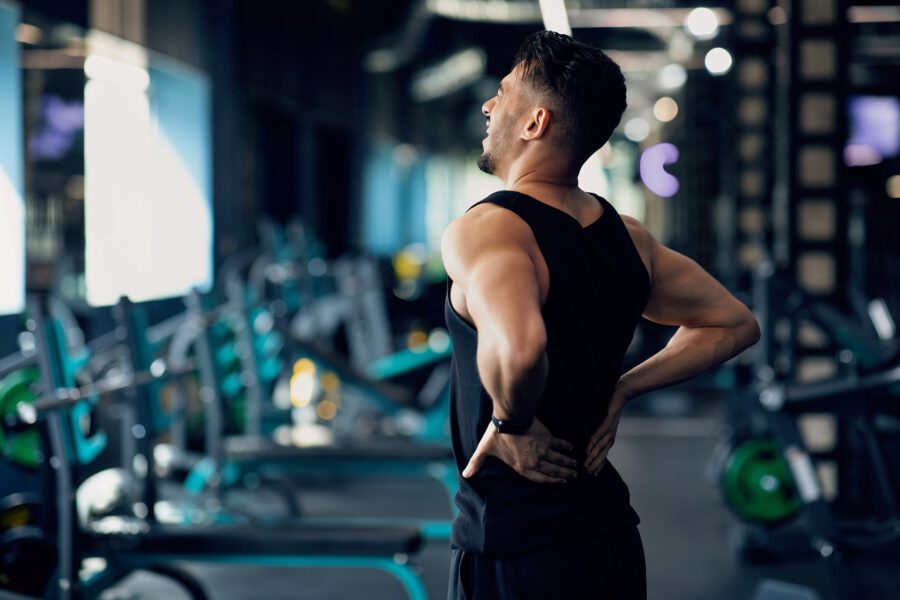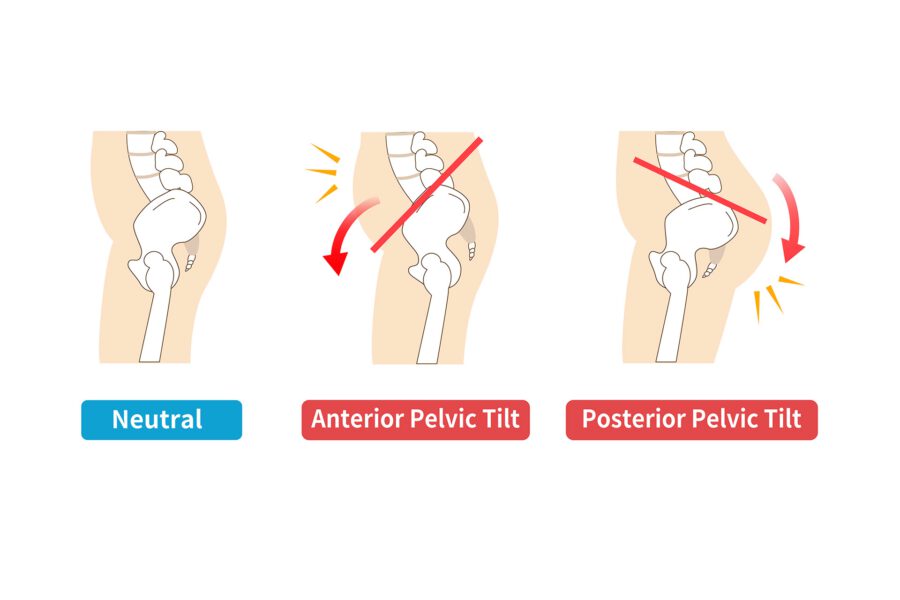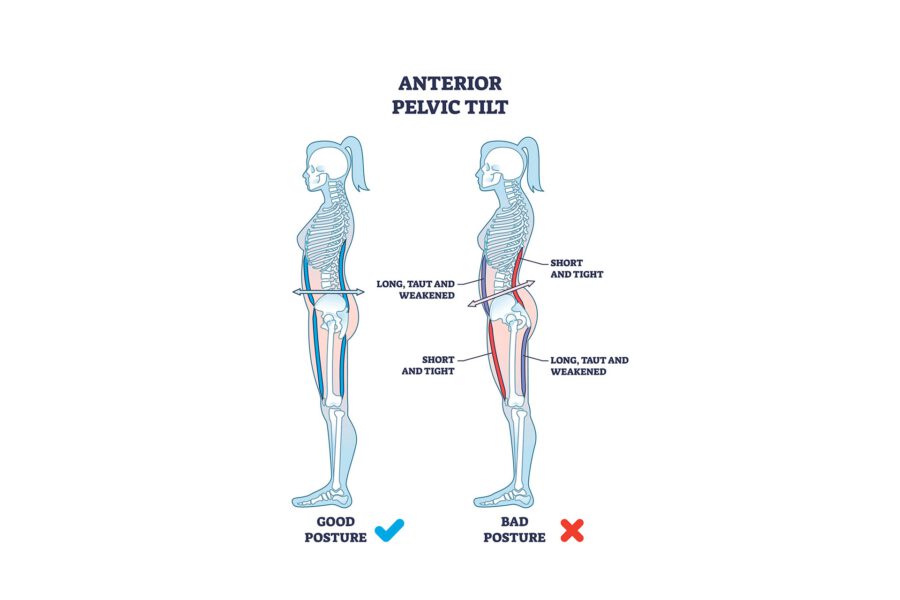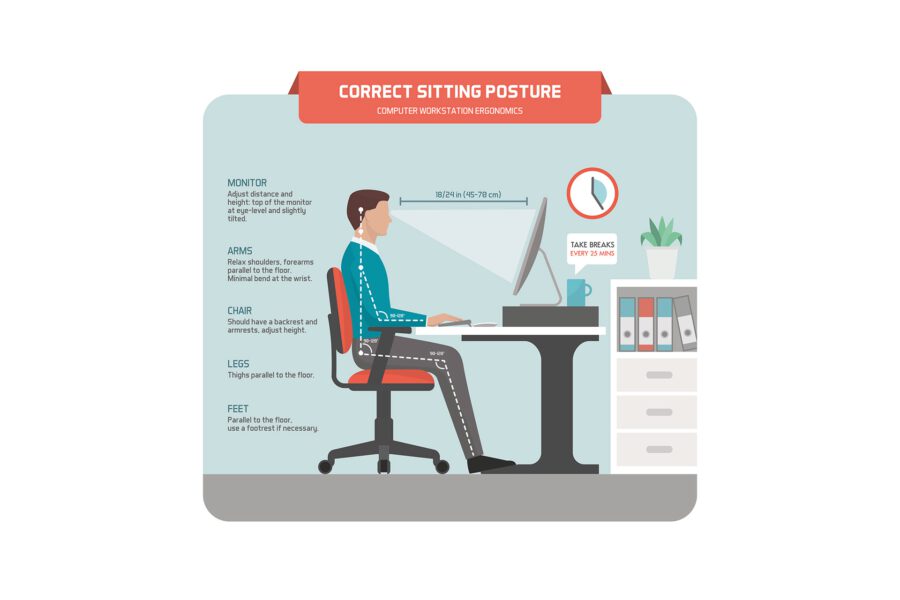How to Fix Anterior Pelvic Tilt and Chronic Low Back Pain
Do you have an excessive lower back curve? Do you suffer from chronic low back pain? Do you feel an awkward sensation in your back when you perform deadlifts or squats? You might have an excessive anterior pelvic tilt.
Anterior pelvic tilt causes the pelvis to rotate or tilt forward beyond its normal and pain-free position. Research suggests that 75% of women and 85% of men are affected by this postural issue, which can lead to chronic low back pain and other issues.
This article will discuss how you can address anterior pelvic tilt and lower back pain.
Anterior pelvic tilt (APT) is a common postural issue in which the front of the pelvis tilts downward while the back rises, causing an excessive curve in the lower back, or what’s scientifically termed lumbar lordosis.
Note that the pelvis has a natural motion to tilt forward (anteriorly) and backward (posteriorly). However, in some cases, this natural positioning becomes exaggerated and may cause biomechanical problems in the spine.
This shift is often due to muscle imbalances, especially around the hips and core, and can develop when we spend long hours sitting—something most of us do daily, whether at a desk, in the car, or on the couch.
Causes of anterior pelvic tilt:
- Sedentary lifestyle (too much time sitting)
- Poor posture
- Tight hip flexors
- Weak core muscles
- Genetic factors
Anterior pelvic tilt is primarily driven by tight hip flexors and a weak core, which can pull your pelvis forward. This forward tilt impacts your movement patterns by overloading the lower back muscles and glutes.
The hip flexors (mainly the iliopsoas and rectus femoris) shorten and tighten, while the glutes and core (particularly the transverse abdominis) lose activation potential.
If left unchecked, this imbalance affects posture and biomechanics in exercises like squats, deadlifts, and lunges. Anterior pelvic tilt can lead to inefficient movement patterns and increase the risk of lower back pain and injury in the gym.
Not all people with anterior pelvic tilting suffer from back pain, but it is a factor for developing one.
When the pelvis tilts too far forward, the lower back muscles must work overtime to stabilize the spine, leading to increased tension and compression in the lumbar region.
Over time, this imbalance puts excessive stress on the lumbar vertebrae and surrounding soft tissues, leading to discomfort, and, in many cases, chronic low back pain.
Increased lumbar lordosis due to anterior pelvic tilting can have a significant impact on lifting technique and core stability. The exaggerated spinal curve disrupts the alignment needed for compound exercises like squats and deadlifts, making it challenging to engage the core fully and protect the lower back.
Without proper alignment, gym-goers often compensate by over-relying on their back muscles instead of using the core and glutes, which increases the risk of injury and limits strength development.
Signs you have excessive anterior pelvic tilt:
- Persistent aches in the lower back
- Protruding stomach
- Stiffness after sitting for long periods
- Sharp, stabbing pain during bending and lifting movements
- Excessive lower back curve (Poor posture)
It’s important to note that not all low back pain is caused by anterior pelvic tilting or excessive lumbar lordosis. Consult a physiotherapist or medical professional if you are having chronic back pain.
Here’s how you can start correcting anterior pelvic tilt to improve alignment and reduce discomfort:
Stretch out the tight muscles that are pulling the pelvis forward, mainly the hip flexors, lower back, and quadriceps. Tight hip flexors, especially from prolonged sitting, pull the pelvis down, contributing to the forward tilt.
Stretching exercises to correct anterior pelvic tilt:
Incorporating foam rolling for the hip flexors and quads can also assist with releasing muscle tightness.
Focus on strengthening the deep core muscles and glutes to stabilize the pelvis and counteract the effects of anterior pelvic tilt. These muscles play a major role in supporting a neutral pelvic position.
Strengthening exercises to correct anterior pelvic tilt:
These exercises activate the core and glutes without straining the lower back, making them great rehabilitation exercises for people with lower back pain.
Consistent core and glute work also enhances your lifting mechanics, helping to protect your lower back in compound exercises.
Maintaining good posture habits is also crucial in preventing anterior pelvic tilt from reoccurring.
When sitting, keep your feet flat, avoid slumping, and keep your hips level. For standing, engage your core slightly, let your shoulders relax, and avoid letting your pelvis tilt excessively forward.
When lifting weights, particularly during movements that require bending at the hip level, such as deadlifts and squats, focus on maintaining a neutral spine and using your glutes and core to drive the movement.
Most people take years to develop faulty posture and excessive lumbar lordosis due to bad habits and routines. If you want to fix an anterior pelvic tilt, remember that consistent practice is the key.
Build a routine that incorporates targeted stretches and strengthening exercises several times a week to gradually reverse the muscular imbalances.
Just as anterior pelvic tilt often develops over time, correcting it also requires time and dedication. With regular, mindful practice, you’ll notice improved alignment, reduced pain, and increased core stability, ultimately benefiting your overall posture and gym performance.
Performing short physical movements known as movement snacks every 1 hour of sitting can activate your glutes and core and prevent tightening of your hip flexors.
Simply standing up, stretching, or taking a quick five-minute walk can help keep the muscles around your pelvis from becoming overly tight. Adding mini-stretching sessions throughout the day, like wall pilates, can also help you improve your posture and address anterior pelvic tilt.
If you frequently work at a desk, an ergonomic setup is essential for maintaining a neutral pelvis. Adjust your chair so your feet are flat on the floor, and your knees are at a 90-degree angle.
Consider a lumbar support pillow to encourage better lower back alignment and prevent slouching. If possible, alternate between sitting and standing to promote natural spinal alignment and keep pelvic muscles active throughout the day.
Core and glute strength play a major role in stabilizing the pelvis, even outside of workouts. When walking, standing, or performing everyday movements, try engaging your core slightly and activating your glutes.
This minor adjustment trains your body to keep the pelvis in a neutral position and reinforces stability in the muscles supporting your spine.
The alignment of your lower body, from your feet up, impacts the position of your pelvis. Wearing supportive shoes with adequate arch support can help improve your stance and balance.
If you have a collapsed foot arch, it can also contribute to knee pain and back issues. Consider wearing an appropriate shoe lift or have an assessment from a physiotherapist to address other biomechanical issues that might be hiding.
Here’s a plan for women that will help you build a strong body:
And for men:
Addressing anterior pelvic tilt isn’t just about correcting a postural issue—it’s about understanding how interconnected our daily habits, strength, and flexibility are with our overall well-being and performance.
By addressing the root causes of anterior pelvic tilt, you're not just solving a lower back pain issue or fixing your squat form; you're investing in a body that moves better, performs better, and recovers better.
As you strengthen core and glute stability, stretch the hip flexors, and build awareness of your alignment, you’re training your body to withstand the demands of everyday life. Simple movements, like walking, lifting, or even standing for extended periods, start to feel more effortless because the body moves as it’s supposed to—efficiently and without strain.



